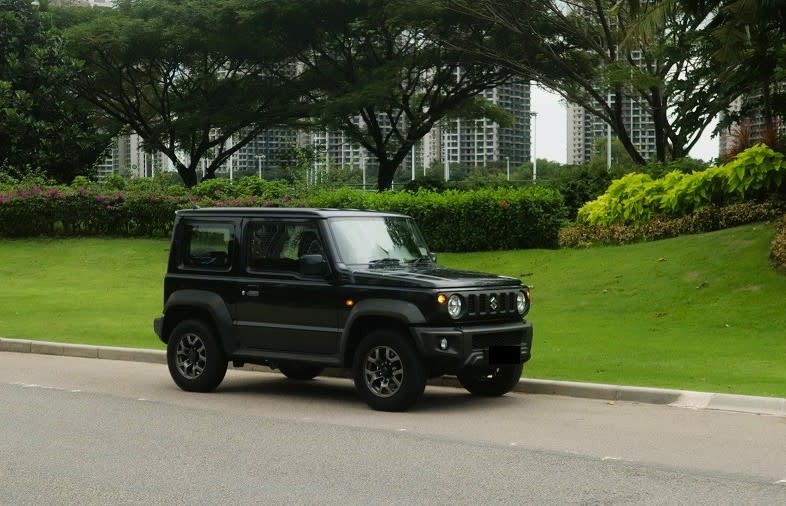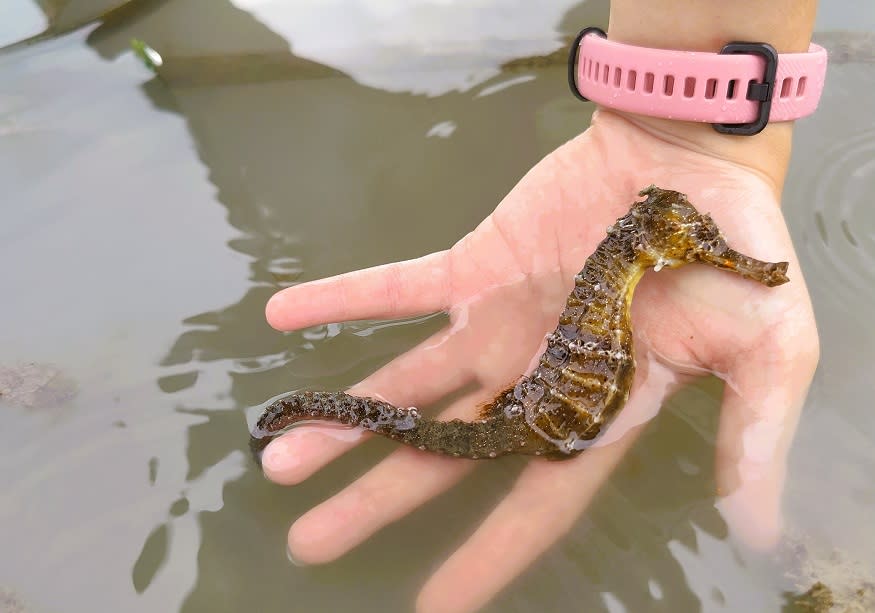Suzuki drive, seahorses thrive whence Poseidon once alive

In Greek mythology, seahorses (scientific name Hippocampus) were hybrid half-horse, half-dolphin sea creatures. Four of the mythical beasts proudly pulled a chariot ridden by Poseidon, throughout his reign as God of the seas.
Petrolheads on the other hand fawn over the Suzuki Jimny for its quirky oddity. It matters not that the mini-4WD ignores so many conventional design and technical cues and being fully-imported; is a bit on the high side of expensive!
While the seahorse faces modern-day dangers wrought by climate change and environmental damage, the future of the cutesy boxy Jimny looks a lot more rosy.
Though no longer called upon to propel Poseidon on his daily commute, life for any present-day seahorse is far from worry-free. Being tiny and rather less huggable than a cuddly panda, only marine scientists are passionate enough to show concern about their survival.
Cue SOS (Save Our Seahorse) Malaysia - a non-governmental organisation dedicated to seahorse, seadragon, and pipefish research conservation. It has been organising Project HippoTag monthly where teams of volunteers wade in the sea in the Tanjung Pelepas estuary in Johor (at low tide) in a survey exercise.
The goal is to spot and tag seahorses to gather data for greater understanding and therefore management and conservation of the species.
Here’s a little trivia to regale guests at your next dinner party: The seahorse’s scientific name is derived from the Greek - “hippos”, horse, and “campus”, sea monster.
Alas, even Poseidon succumbed to the inevitability of mortality, so no amount of credit built up from the seahorse’s mystical past can be expected to stave off the threat to its very own existence.
But fear not; the Hippocampus can rely on the SOS team led by marine biologist Dr Adam Lim who by the way is also a Certified Financial Planner (CFP), specialising in CIF (Critical Illness Fund) insurance; and the Jimny to ensure everything humanly possible is being done to ensure its survival.
I must apologise for my marine meanderings thus far, not that I have completely forgotten that this is Suzuki Jimny territory being trampled by Poseidon in his quadruple seahorse-drawn chariot!
So here’s where the four-wheeled tyke comes in.
I learnt that for 2024 SOS had scheduled five HippoTag trips - two each in March, 2 in May and a final one in June.
So when the stars aligned making the Jimny available for a test drive at the same time one of the tagging expeditions was advertised looking for volunteers, my co-driver and I promptly signed up.
This however involved a five-hour drive from Kuala Lumpur down to Johor Bahru; before proceeding to the Pendas jetty in Gelang Patah.
From there we would head out of the Johor Straits by boat until we reached the shallow waters of the Pulau Merambong shoal (at low tide). This is actually a sandbar that is a thriving seagrass meadow.
One would have thought the Jimny would be found wanting if one were in a hurry but I pressed on one Friday morning after leaving the Sungei Besi toll plaza at about 9am.
For a start, the Jimny looks like a square block bar of soap with no frilly nor rounded edges to slice its way ahead like a hot knife through butter. But it does look playfully cute and its party piece is that it can turn on a dime! It is after all, what the Japanese describe as a kei car - which is as small a car can get to be legally registered for the nation’s highways. (Kei is the shortened form of kei-jidosha which in Japanese means compact automobile)
You certainly would not get fancy drag coefficient figures as you trundle down the highway. It does come with a 1.5 liter engine but being built like a tank, it rumbles along rather sedately - not panting laboriously I hasten to add. But even then, considering I was under a bit of time pressure, there were times I did break the highway code.
The looker that it is, you always elicit positive vibes from the occupants of the far sleeker cars you have just overtaken - or was it them simply letting me drive past so they can secretly admire my rear?
With only three doors, ingress-egress (to stash gear, you need to sacrifice seating and use it as makeshift boot space) can be very challenging; more so if your fellow passenger is plus-sized. Climbing up into the cockpit can be a mountain - especially when it sits quite high. Its huge no-nonsense off-terrain tyres look as if borrowed from one of those construction site workhorses.
There are positives - from the cockpit, vision outside is excellent and parking is a doddle. The first impression one gets is that the Jimny is an AMG-wannabe, albeit in the guise of its mini - which is a complement indeed.
Enough of the motoring detour, now let's get down and dirty - wet and slimy; in all that slushy mud.
Having gathered a team of volunteers including me and photographer Faris, our local boatmen headed out of the jetty and chugged along out towards the Sungai Pulai estuary heading westwards.
The boat trip may make some queasy but everyone perked up the moment our boat started scraping sandy bottom signaling we had reached the Merambong seagrass shoal. You detect so much passion in the group which included a nature enthusiast who came from Hawaii. Not only did they have to make their way to the Pendas Jetty in Johor, they even shelled out RM200 per head for the boat trip.
Once we reached the Merambong seagrass meadows, we all jumped out of the boat and got to work. Wading through the ankle-deep water, everyone was determined to be the first to spot what turned out to be the elusive seahorse or maybe its distant cousin the pipefish.
Once spotted, it was to be gently cupped in the palm of one’s hands, weighed and tagged and the location details logged through GPS data. (Yes, a creature so tiny still gets satellite tracking treatment).

On this trip to the Merambong seagrass meadows (by the way, look towards land on the Johor side and you’ll catch the eerie sight of the humongous Forest City highrise apartment complex.
It does not bode well if developments proceed despite negative Environmental Impact Assessments, as has happened in the past. In the case of the Merambong shoal, at least one University researcher has been quoted as praising the residential project developer for not impacting the sanctity of the seahorse’s stomping grounds. The work of the SOS tagging teams is, therefore invaluable to prove one way or another.
What did we learn from this trip? Where seagrass thrives, seahorses stay alive - for now.
We are right to fear the effects of climate change, pollution, microplastics in fish belly - and into ours brought by untrammeled encroaching development.
But even if the intrepid volunteers had found and tagged just one (we found three seahorses on our watch) during the more than three-hour expedition, that according to Adam is about par for the course.
It is no reason to let our guard down but is a measure of reassurance that so long as the Merambong seagrass meadows continue to thrive, it should continue to support the shoals of fish - and our prized Hippocampus it hosts.
We too shall play our part - for when it is time for the tagging season to resume next year and an SOS is delivered, there might even be a Jimny successor, to be commandeered and ready, to respond and answer. No doubt smiling approvingly up there - Poseidon doth approve!
Images by Faris Budin
The post Suzuki drive, seahorses thrive whence Poseidon once alive appeared first on Twentytwo13.


